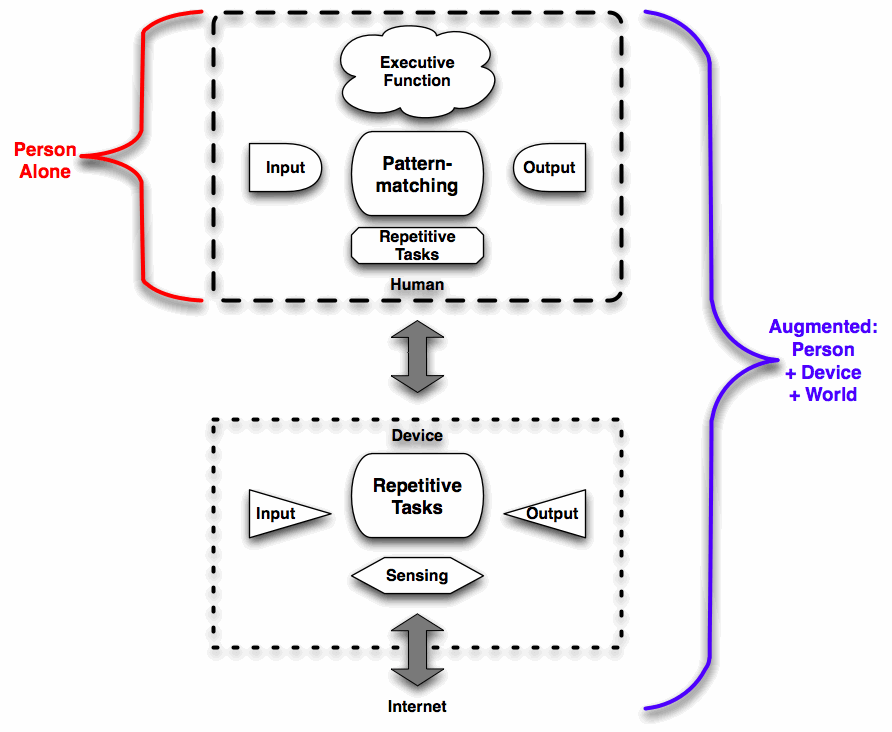Early in the year, I gave a presentation online to the Massachusetts chapter of ISPI (the international society for performance improvement), and they rewarded me with a membership. A nice gesture, I figured, but little more (only a continent away). To my benefit, I was very wrong. The ISPI organization gave each chapter a free registration to their international conference, which happens to be in San Francisco this year (just a Bart trip away), and I won! (While the fact that my proximity may have been a factor, I’m not going to do aught but be very grateful and feel that the Mass chapter can call on me anytime.). Given that I just won a copy of GPS software for my iPhone (after seemingly never winning anything), I reckon I should buy a lottery ticket!
Now, it probably helps to explain that I’ve been eager to attend an ISPI conference for quite a while. I’m quite attracted to the HPT (Human Performance Technology) framework, and I’m ever curious. I even considered submitting to the conference to get a chance to attend, but their submission processes seemed so onerous that I gave up. So, I was thrilled to get a chance to finally visit.
Having completed the experience, I have a few reflections. I think there’s a lot to like about what they do, I have some very serious concerns, and I wish we could somehow reconcile the too-many organizations covering the same spaces.
I mentioned I’m a fan of the HPT approach. There are a couple of things to like, including that they start by analyzing the performance gaps and causes, and are willing to consider approaches other than courses. They also emphasize a systems approach, which I can really get behind. There were some worrying signs, however.
For instance, I attended a talk on Communities of Practice, but was dismayed to hear discussion of monitoring, managing, and controlling instead of nurturing and facilitation. While there may need to be management buy-in, it comes from emergent value, not exec-dictated outcomes the group should achieve!
Another presentation talked about the Control System Model of Management. Maybe my mistake to come to OD presentations at ISPI, but it’s this area I’m interested via my involvement in the Internet Time Alliance. There did end up being transparency and contribution, but it was almost brought in by stealth, as opposed to being the explicit declarations of culture.
On the other hand, there were some positive signs. They had enlightened keynotes, e.g. one talking about Appreciative Inquiry and positive psychology that I found inspiring, and I attended another on improv focusing on accepting the ‘offer’ in a conversation. And, of course, Thiagi and others talked about story and games.
One surprise was that the technology awareness seems low for a group with technology in their prized approach. Some noticed the lack of tweets from the conference, and there wasn’t much of a overall technology presence (I saw no other iPads, for instance). I challenged one of the editors of their handbook, Volume 1 (which I previously complained didn’t have enough on informal learning and engagement) about the lack of coverage of mobile learning, and he opined that mobile was just a “delivery channel”. To be fair, he’s a very smart and engaging character, and when I mentioned context-sensitivity, he was quite open to the idea.
I attended Guy Wallace‘s presentation on Enterprise Process Performance Improvement, and liked the structure, but reckon that it might be harder to follow in more knowledge-oriented industries. It was a pleasure to finally meet Guy, and we had a delightful conversation on these issues and more, with some concurrence on the thoughts above. As a multiple honoree at the conference, there is clearly hope for the organization to broaden their focus.
Overall, I had mixed feelings. While I like their rigor and research base, and they are incorporating some of the newer positive approaches, it appears to me that they’re still very much mired in the old hierarchical style of management. Given the small sample, I reckon you should determine for yourself. I can clearly say I was grateful for the experience, and had some great conversations, heard some good presentations, and learned. What more can you ask for?

